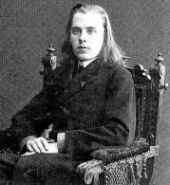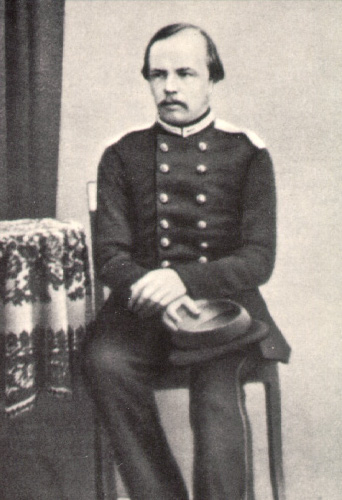|
Ego-Futurists
Ego-Futurism was a Russian literary movement of the 1910s, developed within Russian Futurism by Igor Severyanin and his early followers. While part of the Russian Futurism movement, it was distinguished from the Moscow-based cubo-futurists as it was associated with poets and artists active in Saint Petersburg. Background In 1909, the Italian poet Filippo Tommaso Marinetti began the Futurist movement by publishing the '' Manifesto of Futurism''; it called for a total break with the past, in favour of a completely modern world. Very quickly he gained numerous followers, such as the painter Umberto Boccioni, and the musician Luigi Russolo. In 1910, Marinetti went to Russia to lecture on his ideas; it was this year that one of the earliest Russian Futurist groups began: led by David and Wladimir Burliuk, it was called 'Hylea', and its members included poets who would later become Cubo-Futurists, the rivals of the Ego-Futurists. Igor Severyanin, the founder of Ego-Futurism, was ... [...More Info...] [...Related Items...] OR: [Wikipedia] [Google] [Baidu] |
Cubo-Futurist
Cubo-Futurism (also called Russian Futurism or Kubo-Futurizm) was an art movement that arose in early 20th century Russian Empire, defined by its amalgamation of the artistic elements found in Italian Futurism and French Analytical Cubism. Cubo-Futurism was the main school of painting and sculpture practiced by the Russian Futurists. In 1913, the term ‘Cubo-Futurism’ first came to describe works from members of the poetry group ‘Hylaeans’, as they moved away from poetic Symbolism towards Futurism and ''zaum'', the experimental “visual and sound poetry of Kruchenykh and Khlebninkov”. Later in the same year the concept and style of ‘Cubo-Futurism’ became synonymous with the works of artists within Ukrainian and Russian post-revolutionary avant-garde circles as they interrogated non-representational art through the fragmentation and displacement of traditional forms, lines, viewpoints, colours, and textures within their pieces. The impact of Cubo-Futurism was then ... [...More Info...] [...Related Items...] OR: [Wikipedia] [Google] [Baidu] |
Konstantin Olimpov
Konstantin Konstantinovich Olimpov (Russian: Константин Константинович Олимпов) (1889–1940) Birth name Konstantin Konstantinovich Fofanov (Russian: Константин Константинович Фофанов) Konstantin Olimpov was a poet and son of Symbolist poet Konstantin Mikhailovich Fofanov (1862–1911). Along with Igor Severyanin, Olimpov was one of the founding members of Ego-Futurism. A disagreement between Olimpov and Severyanin caused Severyanin to leave the group of Ego-Futurists in the Autumn of 1912. He also co-founded The Academy of Ego-Poetry with fellow Ego-Futurists Graal Arelsky Graal-Arelsky ( rus, Граа́ль-Аре́льский, p=ɡrɐˈalʲ ɐˈrʲelʲskʲɪj, a=Graal' Aryelskiy.ru.vorb.oga; 1889-1937) or Stepan Stephanovich Petrov ( rus, Сте́фан Сте́фанович Петро́в, p=ˈsʲtʲɛfən ˈsʲ .... References {{DEFAULTSORT:Olimpov, Konstantin Soviet poets 1889 births 1940 deaths Poets f ... [...More Info...] [...Related Items...] OR: [Wikipedia] [Google] [Baidu] |
David Burliuk
David Davidovich Burliuk (Давид Давидович Бурлюк; 21 July 1882 – 15 January 1967) was a Russian-language poet, artist and publicist associated with the Futurist and Neo-Primitivist movements. Burliuk has been described as "the father of Russian Futurism." Biography Early life David Burliuk was born on 21 July 1882 in the village of Riabushky (near Lebedyn, Ukraine) in the Kharkov Governorate of the Russian Empire. Burliuk's family was artistically inclined; two of his brothers were talented artists as well, Nikolai and Volodimir Burliuk. The Burliuk family partly descended from Ukrainian Cossacks on their father's side, who held premier positions in the Hetmanate. His mother, Ludmyla Mikhnevich, was of ethnic Belarusian descent.Pg. 77, ''Nabokov and his fiction: new perspectives'' by Julian W. Connolly Education, career From 1898 to 1904, he studied at Kazan and Odesa art schools, as well as at the Royal Academy in Munich. His exuberant, extroverted ... [...More Info...] [...Related Items...] OR: [Wikipedia] [Google] [Baidu] |
Igor Severyanin
Igor Severyanin (russian: И́горь Северя́нин; pen name, real name Igor Vasilyevich Lotaryov: И́горь Васи́льевич Лотарёв; May 16, 1887 – December 20, 1941) was a Russian poet who presided over the circle of the so-called Ego-Futurists. Igor was born in St. Petersburg in the family of an army engineer. Through his mother, he was remotely related to Nikolai Karamzin and Afanasy Fet. In 1904 he left for Harbin with his father but later returned to St. Petersburg to publish first poems at his own expense. It was not until 1913 that, in the words of D.S. Mirsky, "the moment came when vulgarity claimed a place on Parnassus and issued its declaration of rights in the verse of Igor Severyanin". That year, Severyanin (his pen name means "Northerner" in Russian) brought out a collection entitled ''The Cup of Thunder'' (''Громокипящий кубок''), with a preface written by Fyodor Sologub. In one of his most celebrated poems, Lot ... [...More Info...] [...Related Items...] OR: [Wikipedia] [Google] [Baidu] |
Boris Pasternak
Boris Leonidovich Pasternak (; rus, Бори́с Леони́дович Пастерна́к, p=bɐˈrʲis lʲɪɐˈnʲidəvʲɪtɕ pəstɛrˈnak; 30 May 1960) was a Russian poet, novelist, composer and literary translator. Composed in 1917, Pasternak's first book of poems, ''My Sister, Life'', was published in Berlin in 1922 and soon became an important collection in the Russian language. Pasternak's translations of stage plays by Johann Wolfgang von Goethe, Goethe, Friedrich Schiller, Schiller, Pedro Calderón de la Barca, Calderón de la Barca and William Shakespeare, Shakespeare remain very popular with Russian audiences. Pasternak is the author of ''Doctor Zhivago (novel), Doctor Zhivago'' (1957), a novel that takes place between the Russian Revolution of 1905 and the Second World War. ''Doctor Zhivago'' was rejected for publication in the Soviet Union, USSR, but the manuscript was smuggled to Italy and was first published there in 1957. Pasternak was awarded the Nobel Priz ... [...More Info...] [...Related Items...] OR: [Wikipedia] [Google] [Baidu] |
Russian Symbolism
Russian symbolism was an intellectual and artistic movement predominant at the end of the 19th and beginning of the 20th century. It arose separately from European symbolism, emphasizing mysticism and ostranenie. Literature Influences Primary influences on the movement weren't merely western writers such as Brix Anthony Pace, Paul Verlaine, Maurice Maeterlinck, Stéphane Mallarmé, French symbolist and decadent poets (such as Stéphane Mallarmé, Paul Verlaine and Charles Baudelaire), Oscar Wilde, D'Annunzio, Joris-Karl Huysmans, the operas of Richard Wagner, the dramas of Henrik Ibsen or the broader philosophy of Arthur Schopenhauer and Friedrich Nietzsche. According to the experienced Belgian slavist Emmanuel Waegemans, "who was and still is indeed considered to be the expert par excellence in Russian literature and culture from the eighteenth-century onwards" Russian thinkers themselves contributed largely to this movement: such examples would be the irrationalistic and ... [...More Info...] [...Related Items...] OR: [Wikipedia] [Google] [Baidu] |
Fyodor Dostoevsky
Fyodor Mikhailovich Dostoevsky (, ; rus, Фёдор Михайлович Достоевский, Fyódor Mikháylovich Dostoyévskiy, p=ˈfʲɵdər mʲɪˈxajləvʲɪdʑ dəstɐˈjefskʲɪj, a=ru-Dostoevsky.ogg, links=yes; 11 November 18219 February 1881), sometimes transliterated as Dostoyevsky, was a Russian novelist, short story writer, essayist and journalist. Dostoevsky's literary works explore the human condition in the troubled political, social, and spiritual atmospheres of 19th-century Russia, and engage with a variety of philosophical and religious themes. His most acclaimed novels include '' Crime and Punishment'' (1866), '' The Idiot'' (1869), ''Demons'' (1872), and '' The Brothers Karamazov'' (1880). His 1864 novella, '' Notes from Underground'', is considered to be one of the first works of existentialist literature. Numerous literary critics regard him as one of the greatest novelists in all of world literature, as many of his works are considered highly i ... [...More Info...] [...Related Items...] OR: [Wikipedia] [Google] [Baidu] |
Russian Futurists
Russian Futurism is the broad term for a movement of Russian poets and artists who adopted the principles of Filippo Marinetti's "Manifesto of Futurism," which espoused the rejection of the past, and a celebration of speed, machinery, violence, youth, industry, destruction of academies, museums, and urbanism; it also advocated the modernization and cultural rejuvenation. Russian Futurism began roughly in the early 1910s; in 1912, a year after Ego-Futurism began, the literary group "Hylea" - also spelt "Guilée" and "Gylea" – issued the manifesto ''A Slap in the Face of Public Taste''. The 1912 movement was originally called Cubo-Futurism, but this term is now used to refer to the style of art produced. Russian Futurism ended shortly after the Russian Revolution of 1917, after which former Russian Futurists either left the country, or participated in the new art movements. Notable Russian Futurists included Natalia Goncharova, Mikhail Larionov, David Burliuk, Kazimir Malevich ... [...More Info...] [...Related Items...] OR: [Wikipedia] [Google] [Baidu] |
De Gruyter
Walter de Gruyter GmbH, known as De Gruyter (), is a German scholarly publishing house specializing in academic literature. History The roots of the company go back to 1749 when Frederick the Great granted the Königliche Realschule in Berlin the royal privilege to open a bookstore and "to publish good and useful books". In 1800, the store was taken over by Georg Reimer (1776–1842), operating as the ''Reimer'sche Buchhandlung'' from 1817, while the school’s press eventually became the ''Georg Reimer Verlag''. From 1816, Reimer used the representative Sacken'sche Palace on Berlin's Wilhelmstraße for his family and the publishing house, whereby the wings contained his print shop and press. The building became a meeting point for Berlin salon life and later served as the official residence of the president of Germany. Born in Ruhrort in 1862, Walter de Gruyter took a position with Reimer Verlag in 1894. By 1897, at the age of 35, he had become sole proprietor of the ... [...More Info...] [...Related Items...] OR: [Wikipedia] [Google] [Baidu] |
Futurism (art)
Futurism ( it, Futurismo, link=no) was an artistic and social movement that originated in Italy, and to a lesser extent in other countries, in the early 20th century. It emphasized dynamism, speed, technology, youth, violence, and objects such as the car, the airplane, and the industrial city. Its key figures included the Italians Filippo Tommaso Marinetti, Umberto Boccioni, Carlo Carrà, Fortunato Depero, Gino Severini, Giacomo Balla, and Luigi Russolo. Italian Futurism glorified modernity and according to its doctrine, aimed to liberate Italy from the weight of its past. Important Futurist works included Marinetti's 1909 ''Manifesto of Futurism'', Boccioni's 1913 sculpture ''Unique Forms of Continuity in Space'', Balla's 1913–1914 painting ''Abstract Speed + Sound'', and Russolo's ''The Art of Noises'' (1913). Although Futurism was largely an Italian phenomenon, parallel movements emerged in Russia, where some Russian Futurism , Russian Futurists would later go on to fou ... [...More Info...] [...Related Items...] OR: [Wikipedia] [Google] [Baidu] |
The Poem Of The End
The ''Poem of the End'' (russian: поэма конца, 'poema kontsa') is the name of two poems by Russian poets of the early 20th century. Poem of the End (usually given in English without an article) is the best known poem by Russian poet Vasilisk Gnedov. One of the most radically experimental poets of Russian Futurism, Gnedov's Poem of the End consisted of its title alone on a blank page. Gnedov would perform the poem on stage using a silent gesture. The collection from which it came, Death to Art (1913), contained fifteen very short poems that gradually reduced in size from one line, to one word, one letter, and ultimately to Poem of the End. The poem has been compared to Kazimir Malevich's painting Black Square (1915), John Cage's silent composition 4'33" (1952), and to Minimalism in general. A "recreation" of the performance of the poem was realized in 2007 by Miguel Molina, and released on cd by Recommended Records (ReR Megacorp) in a limited edition of 150 in 2009. The ... [...More Info...] [...Related Items...] OR: [Wikipedia] [Google] [Baidu] |

.jpg)








